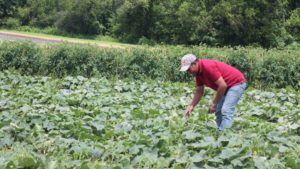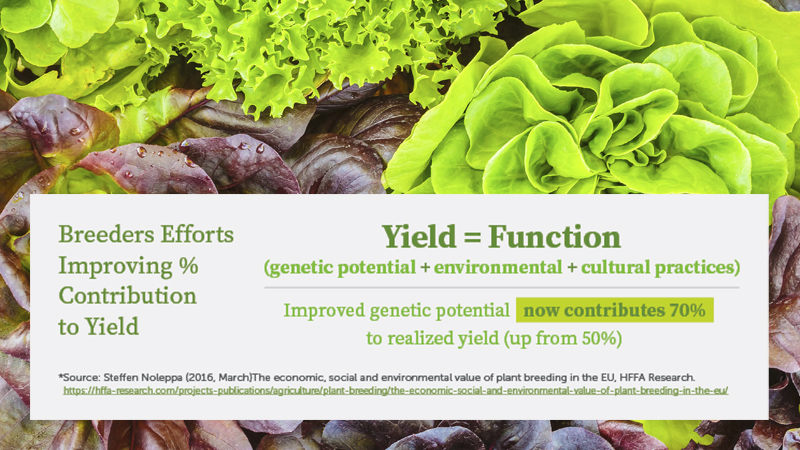A Revised H-2C Is Now Part of House Immigration Bill

An H-2A worker at Janowski Farms.
Currently, the U.S. House’s best shot for resolving DACA (Deferred Action for Childhood Arrivals) is a bill that includes a revised AG Act, which would replace H-2A with the H-2C program, the brainchild of Judiaciary Committee Chairman, Rep. Bob Goodlatte’s (R-VA).
The new version of Rep. Goodlatte’s H-2C in Securing America’s Future Act (H.R. 4760) has changed enough from the original that previous supporters are now opposing the bill, including Western Growers and the California Farm Bureau Federation.
The American Farm Bureau, however, is supporting the bill. Some reports credit the American Farm Bureau for Goodlatte making changes to the original AG Act.
“Chairman Goodlatte’s AG Act would establish a new H-2C agriculture worker program that is far superior to the existing H-2A program,” an American Farm Bureau statement reads.
Food and Environment Reporting Network [subscription required] outlined some of the changes Rep. Goodlatte made:
▪ Touch-back expanded. One edit Goodlatte made gives a benefit to and creates a complication for growers. First, it allows operations to obtain pre-approval of H-2C visas for workers before they leave the country. But then it increases the touch-back requirement from six months to a full year.
That last element is one of the key reasons Western Growers’s board now unanimously opposes the legislation.
“The bill would force long-time existing workers in agriculture to return to their countries of origin in order to apply for a new H-2C visa or stay in the shadows. … Few employees would leave spouses and children behind in the U.S., many subject to deportation, on the questionable assumption that the federal government will efficiently readmit them as temporary seasonal guestworkers. Additionally, those who do raise their hands to return to a country they no longer know may face difficulty with re-entry after so many years,” a statement from the board reads.
▪Cap tightened. One area of the original AG Act that growers were wary of was that it capped the number of people allowed in the program. Assurances were given that since anyone currently in the in the system would be grandfathered in, the amount allowed was much higher that the 500,000-worker cap.
The new language lowers the the overall amount of workers to no more than 900,000 at any one time after the first year of the program. Since the legislation aims to include all food farms and processing plants — expanding the number of operations that can access the prorgram to include dairies, meatpacking, fisheries, as well as the current seasonal workers — there will be a higher demand on the system.
“The bill also imposes an unworkable cap on new visas — effectively 410,000 the first year and 820,000 the second year for fresh produce and other sectors — which would be insufficient for the estimated need. Studies indicate that there are currently 2 million undocumented farm workers in the U.S., with 400,000 to 500,000 in the West alone,” Western Growers’ statement reads.
▪ Visa length expanded. The standard visa would last for 24 months, instead of the original 18 months. On the whole, that is a positive move for growers. But in context with the longer touch-back time frame and capping participants in the program, it can set up conflicts for growers.
▪ E-Verify enforced. Growing operations would have 24 months to adopt the E-Verify system of digitally checking if applicants can work legally in the United States. Homeland Security Department must have E-Verify in operation within 24 months of enactment of the law. In theory, H-2C workers could work at will from that point.
The bill does not address the legal status of current undocumented agricultural workers. An oversight that spurred the California Farm Bureau Federation opposition.
“For California farmers and ranchers, the combination of the AG Act and E-Verify would actually worsen chronic agricultural employee shortages. We will press for a better solution,” says the association’s president, Jamie Johansson.
The American Farm Bureau, which supports the bill, agrees more needs to be done to protect existing workers.
The following caveat is included in the American Farm Bureau’s statement of support:
“We are continuing to work with Chairman Goodlatte and other members of Congress to provide greater assurances on how the AG Act would affect our existing workforce. Farmers today rely on these workers. They sustain our farms. They are part of the fabric of many rural economies. Farm Bureau policy supports providing these workers the opportunity to earn permanent legal status. That is our goal and we will do everything we can to achieve it.”









